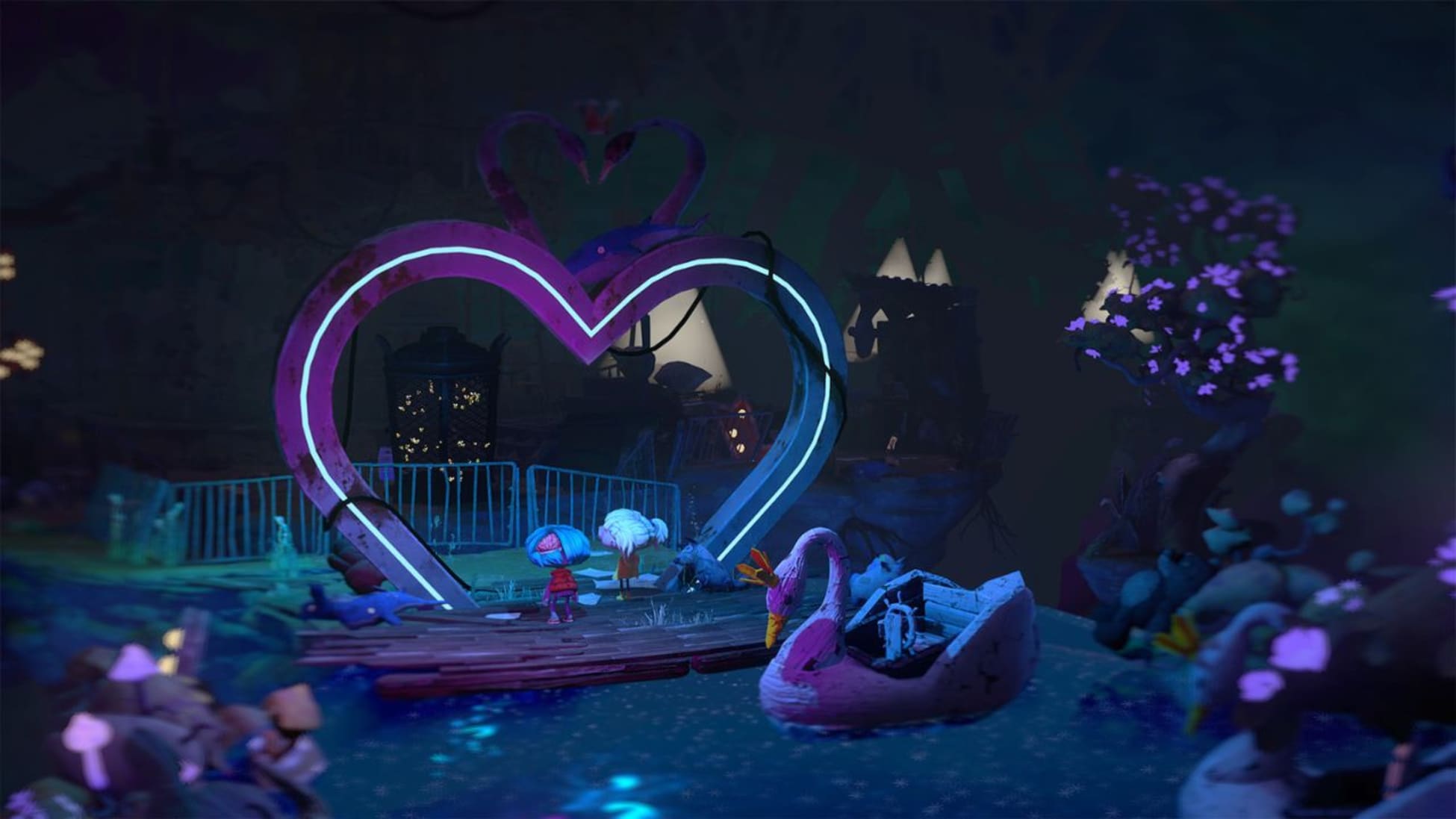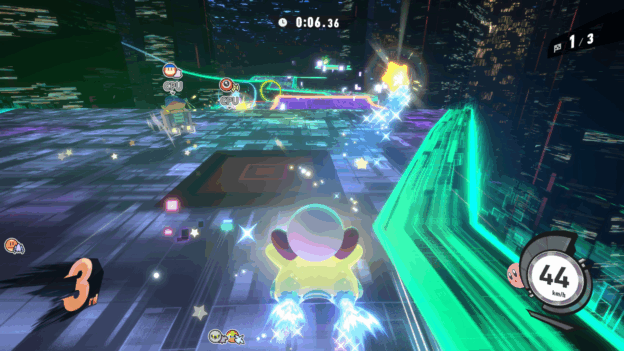Street Fighter 6 Years 1-2 Fighters Edition Review – Review

Powerful punches in the palm of your hand.
Part of the terms and conditions of Nintendo console ownership the past seven years has been watching from the sidelines as the more powerful console competitors got the latest from third party developers. Despite this, the Switch has been blessed with an overflow of arcade classics, comprehensive compilations, and even ports that developers took care to bring to the handheld hybrid. Dragonball Fighter Z, Samurai Showdown, and even the Mortal Kombat series made their appearance, albeit with diminished visuals. It’s something I appreciated greatly, even in the case of Netherream Studios with its unintentional graphical nightmare fuel. That said, the 800lb Zangief in the room was the absence of proper Street Fighter releases since 2011. Street Fighter IV 3D Edition was a game for the 3DS that was compromised by its cramped controls and felt more like launch game padding, hardly Capcom’s best foot forward. Switch owners had to watch from a distance while the PlayStation 4 and PC owners got Street Fighter V. With the Switch 2, Capcom took a slot on the launch day roster with Street Fighter 6 Years 1-2 Fighters Edition. This port includes the Season 1 & 2 DLC characters available on other platforms, and is the most complete version of the game so far.
Street Fighter VI in many ways was a counterreaction to its predecessor. Street Fighter V was a threadbare package at launch, with almost no single-player content and lacking character in its presentation. Its focus on competitive matchmaking and a self-seriousness that doesn’t befit the series made it fall flat for those who weren’t yearning for the EVO mainstage. I love Street Fighter VI’s braggadocious style. There’s a swagger in the roster’s characterizations. The baton-passing from Ryu to Luke mirrors the hand-off from V to VI, with the former’s restrained demeanor juxtaposed alongside the latter’s overflowing cup of loud confidence. The menus and action are laced with neon, with combat accented by splashes of color with every impact that looks like someone threw buckets of paint against the wall. The hip hop tone is off the charts, and I haven’t seen this amount of personality in this series since Street Fighter III. There are allusions to the competitive fighting scene like options for in-game beat-by-beat commentators, but it’s nice trim rather than its focal point.
The action is as good as ever. The roster is diverse in background, physical attributes, combat style, and special moves. The Drive Gauge combat system is such a cool approach and is a conglomeration of tactical approaches including parrying, special attack meters, and a focus attack that’s like an armored attack that can take several hits before getting stunned out of it. It’s like Capcom wrapped their arms around lots of different ideas they had, dropped them on the ground, and told us “fine, here are the keys, you drive where you want to go”. Another big change is the control scheme. Street Fighter VI defaults to a “modern” control set that simplifies attacks to four buttons and directional inputs. A “classic” 6-button configuration is still available but has to be changed within various menus depending on what mode you’re playing. The defaulting to a new control scheme and such a big focus on Luke as the “face” to the game has me feeling like that Matt Damon gif of him turning old in Saving Private Ryan, but they’re both valid options and I’m glad they’re still working on approachability to the player.

A breadth of game modes and options are here, broken into three subcategories: Fighting Ground, Battle Hub, and World Tour. Fighting Ground contains the bulk of the game, including arcade mode which is something I would have taken for granted before Street Fighter V. A robust set of practice modes include training and tutorials, as well as specific character guides and separate challenges to chain together combos with your character of choice. It’s refreshing to see this level of effort to grow the player from novice to proper competitor and gives new entrants a more advanced hand-holding experience. The versus modes include not just one-on-one but team battles where you select up to three versus three matches. These aren’t tag battles but instead an elimination series of matchups. They play out a little too long for my liking, but it’s a nice addition to mix things up. Switch 2 has exclusive Gyro Battle and Calorie Count modes, using joycon gyro controls to simplify movement and attacks to slight tilting and swinging of the controller. Gyro Battle is more straight-laced, while Calorie Count is explicitly silly in tone and gives an estimated number of calories burnt. In practice it’s like Capcom felt the need to shoehorn something unique for Switch 2, and it’s something I can’t imagine returning to. Online matchmaking is where I’ll spend most of my time, and Street Fighter VI has you choosing a preferred fighter, costume, and stage, among others. Mercifully you’re able to play other modes in the Fighting Ground while waiting for a connection, so spend those minutes wisely in practice mode before then.
Battle Hub is Capcom’s effort at a social gathering space for the game. You’ll need to create an avatar to enter this space, which has more options for customizing their appearance and slide bars to make some real monstrosities. Everyone starts with the same set of orange pants and white tank top that gives real Orange is the New Black vibes. My aging millennial emo aesthetic looked especially silly in that getup. You can buy gear using fighter coins (Capcom’s premium currency) or in-game currency that can be earned via battling. I’m not one to spend a lot of time in managing my appearance, but I haven’t found a reason to drop real currency so far. You can sit at a cabinet and wait for someone else to join you. In addition, there’s Li-Fen’s V-Rival mode, a combat system that estimates your current skill level and matches the computer against you. It’s a neat idea that feels akin to Super Smash Bros. Ultimate’s amiibo fighters. In practice, the Battle Hub social space feels pretty empty. I didn’t have anyone sit down at a cabinet with me, and most players are standing in front of the V-Rival menu. It’s reminiscent of Playstation Home and the litany of fighting games that feel the need to make the menu into a walkable space. Thankfully in the case of Street Fighter VI, it’s relegated to its separate mode rather than required navigation.

If you’re wanting a robust single player experience, there’s World Tour. In it you play as an avatar of your making, and as a fledgling fighter trained by Luke you’re sent out into the world to compete against others and learn the ways of the warrior. You’re strung along a narrative thread via missions sent from your cellphone, but you can walk up and fight just about everyone on the street. Each combatant has an assigned level, so if you’re early on and approach a level ten opponent you could be in for a bad time. Beyond gaining experience and leveling up, combat yields currency used in-game to purchase apparel and pay for stat boost and recovery items. You’ll also encounter fighters from the main roster who act as teachers, unlocking their movesets and fighting style. For example, Chun-Li is the first master you encounter. Her grace and fluidity looked hilarious juxtaposed against my middle-age. My Chemical Romance wannabe avatar. I really like how the game also offers the mixing and matching of fighting style and moves which made me feel like I was developing my own unique character, even if his special attacks were lifted from other people. World Tour mode is the kind of expansive single-player experience that I can really get behind, and it’s the best single player experience in the series I’ve had since Street Fighter Alpha 3’s World Tour mode.
World Tour mode brought with it the topic of graphical performance and framerates. Docked, Street Fighter VI looks great. Really Great. Like “I didn’t notice a difference between the Switch 2 and its console brethren” great. Versus combat is silky smooth, never experiencing any slowdown, hitches, or graphical muddiness in action. It’s exciting and refreshing to have this game on a Nintendo console that can keep a high standard for performance. Handheld does come with its compromises but doesn’t diminish the experience. You get less crisp visuals and lower, if consistent framerate. World Tour has a curious experience both in the hand and on the TV. When docked, the overworld moves at top speed, but when getting into combat the framerate takes a rough hit at the start then loses graphical fidelity in action. Handheld is much like the other modes in that it’s a consistent framerate. NWR colleague Melanie Zawodniak pointed out that the PlayStation 5 and Xbox Series versions struggled similarly with World Tour. That said, World Tour’s difficulty has been approachable enough to where I will likely play it all handheld, warts and all.
Maybe the best part of the package is the addition of all the DLC fighters from Season 1 & 2. The core roster was already a quality mix of old and new characters, with the originals sporting a new get up that befits their years of experience and newcomers that are distinctly cool without sticking out like a sore thumb. Each DLC season went for approximately $30 each, so this release has the best bang-for-your-buck. The additional fighters are a good mishmash of old mainstays from across the franchise, completely new entrants, and some fun mashups with Terry and Mai from Fatal Fury. I spent a lot of time with Rashid, a man with an aristocratic background and cyclone-based powers that had the handling of classic characters with a dynamic and fast skillset. With season 3 fast approaching, Capcom is giving people a good excuse to dive in at this entry point and prime the pump for sales on that end.
Street Fighter 6 Years 1-2 Fighters Edition is an example of taking a great game, bringing it to a platform with minimal compromises on the TV screen, and putting it in the palm of your hand to take on the go. Would I like the Switch 2 exclusive modes to be more robust? Sure. Do I wish the World Tour mode didn’t come with some performance hitches? Of course. Would I like someone to make a Switch 2 controller with a competent D-pad? Absolutely. Ultimately this is the best possible way to start the Switch 2 launch: with a re-introduction to the godfather of fighting games.




